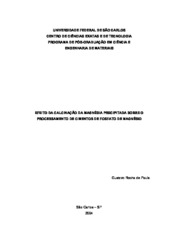Efeito da calcinação da magnésia precipitada sobre o processamento de cimentos de fosfato de magnésio.
Resumen
It is great the interest for materials synthesized at room temperature
because they represent an alternative for the current problems of energy. The
class of magnesia phosphate cements belongs to this group, being mouldable
ceramics that combine low density and good mechanical strength in a short
period of time. The main disadvantage of these materials resides in their cost,
even high if compared to Portland cement. The calcination stage of the
magnesium oxide (MgO), necessary due to the high reactivity of that oxide with
phosphates, is especially costly, besides the need of the addition of retardants
to increase the setting time of these cements. The present work aimed to study
forms of increasing the setting time of these cements and to evaluate
alternatives to decrease the calcination temperature of MgO powders.
Techniques such as X ray diffraction, infrared spectroscopy, scanning electronic
microscopy, Hg porosimetry, He picnometry, and analyses of particle size
distribution, specific surface area, apparent density and compression strength
were used for the characterization of the calcined MgO powders and the
cements. In a scientific-technological point of view, the main contribution of this
work was the use of both liquid phase former additives and the microwave
radiation for the calcination of MgO. In these conditions powders with
appropriate particle size distributions and low specific surface areas were
produced, which led to cements with longer reaction time and high mechanical
strength. The microwave assisted calcination of MgO powders at 900 oC, with
microwave absorbing raw materials, resulted in cements with superior
properties when compared to those ones produced with powders calcined in
conventional furnaces at 1100 oC. Another advantage was a heating rate five
times faster and the temperature dwell four times shorter than those ones used
in conventional firing. Such facts demonstrate the promising use of additives
and the microwave firing to decrease the temperature of calcination of MgO and
optimize the properties of magnesia phosphate cements.
